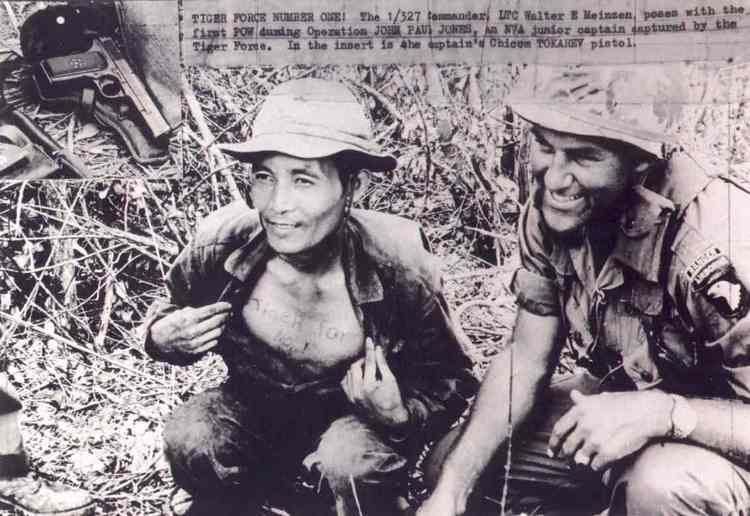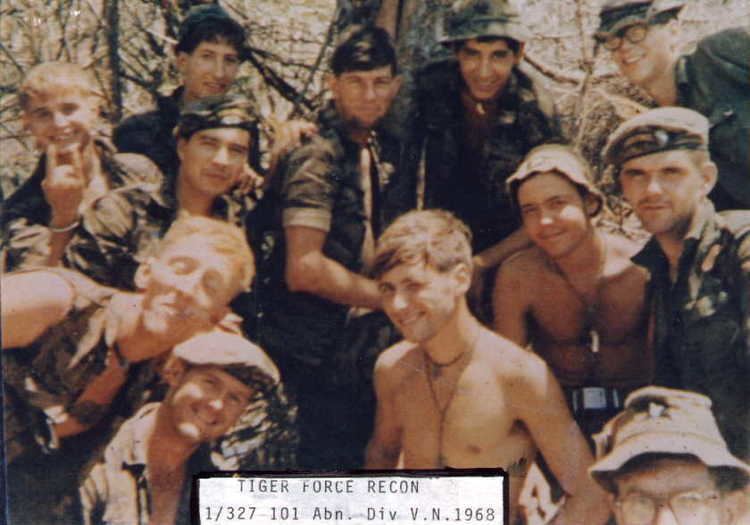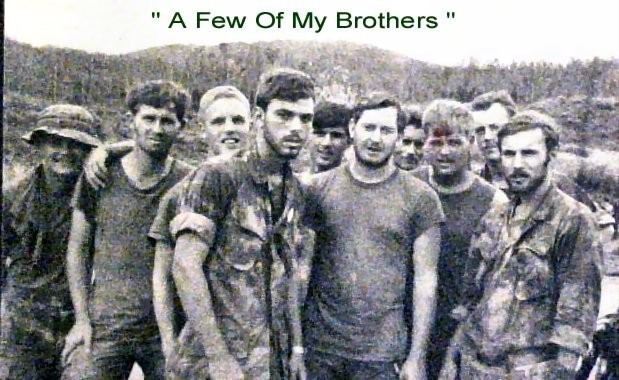Founded 1965 Part of XVIII Airborne Corps | Size 45 | |
 | ||
Type Special operations forces Role Special reconnaissance, counter-insurgency, direct action, raiding Decoration Presidential Unit Citation Similar United States Army, Long‑range reconnaissance patrol, MIKE Force, Army of the Republic of Vietnam, Army of the Republic of Vietnam | ||
Tiger Force was the nickname of a long-range reconnaissance patrol unit of the 1st Battalion (Airborne), 327th Infantry Regiment, 1st Brigade (Separate), 101st Airborne Division, which fought in the Vietnam War.
Contents
- Gi joe tiger force commercial 1992
- Composition
- Investigations of war crimes
- Partial list of members 19651969
- In popular culture
- References

Gi joe tiger force commercial 1992
Composition

The platoon-sized unit, approximately 45 paratroopers, was founded by Colonel David Hackworth in November 1965 to "outguerrilla the guerrillas". Tiger Force (Recon) 1/327th was a highly decorated small unit in Vietnam, and paid for its reputation with heavy casualties. In October 1968, Tiger Force's parent battalion was awarded the Presidential Unit Citation by President Lyndon B. Johnson, which included a mention of Tiger Force's service at Đắk Tô in June 1966.
Investigations of war crimes

On October 19, 2003, Michael D. Sallah, a reporter at The Blade (Toledo) newspaper, obtained unreleased, confidential records of U.S. Army commander Henry Tufts. One file in these records referred to a previously unpublished war crimes investigation known as the Coy Allegation. To investigate this further, Sallah gained access to a large collection of documents produced by the investigation held at the National Archives in College Park, MD.

Sallah found that between 1971 and 1975 the Army's Criminal Investigation Command had investigated the Tiger Force unit for alleged war crimes committed between May and November 1967. The documents included sworn statements from many Tiger Force veterans, which detailed war crimes allegedly committed by Tiger Force members during the Song Ve Valley and Operation Wheeler military campaigns. The statements, from both individuals who allegedly participated in the war crimes and those that did not, described war crimes such as the following:

The investigators concluded that many of the war crimes indeed took place. Despite this, the Army decided not to pursue any prosecutions.
For instance, when Capt. Harold McGaha first landed in the operations area where the Tigers were waiting, he was taken aback. He noticed that several were wearing what he recognized as human ears. It was not a secret at the base that some soldiers were mutilating bodies. This was not isolated to Tiger Force, but according to some reports, occurred to varying degrees in other Army infantry and Marine units.
Their high bodycounts were recognized and encouraged by military officials. Col. Morse ordered troops to rack up a body count of 327 casualties in order to match the battalion's infantry designation, 327th; however by the end of the campaign soldiers were congratulated for their 1000th kill.
After studying the documents, Sallah and fellow reporter Mitch Weiss located and interviewed dozens of veterans who served in Tiger Force during the period in question as well as the CID investigators who later carried out the Army's inquiry. The reporters also traveled to Vietnam and tracked down numerous residents of Song Ve Valley who identified themselves as witnesses. Sallah and Weiss reported that the war crimes were corroborated by both veterans and Song Ve Valley residents. The reporters also managed to track down dozens of additional investigative records not included in the National Archives.
In October 2003, the reporters published their findings in a series of articles in The Toledo Blade. Subsequently, The New York Times performed their own investigation, contacting a few Tiger Force veterans and corroborating The Toledo Blade's findings.
Since The Blade's story, the United States Army has opened a review of the former Tiger Force investigation, but has not yet provided much additional information. On May 11, 2004, Lt. Col. Pamela Hart informed The Blade reporters that she had been too busy responding to prisoner abuse by U.S. soldiers in Iraq to check on the status of the Tiger Force case. The Blade has not reported on any more recent updates from the U.S. Army.
Reporters Michael D. Sallah, Mitch Weiss, and Joe Mahr received multiple awards for their series:
In 2006, Sallah, now an investigative reporter with The Washington Post, and Weiss, an investigative reporter with the Associated Press, co-authored a book chronicling their findings: Tiger Force: A True Story of Men and War (2006).
